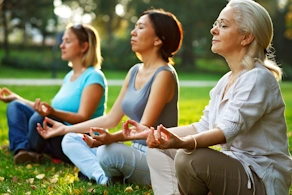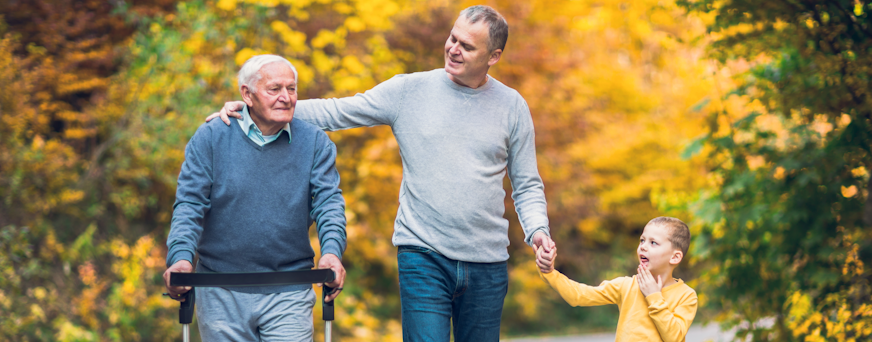Knee Strengthening Exercises For Canadian Seniors
Healthy knees support walking, standing, and moving comfortably through daily life. However, knee pain and joint stiffness with age can limit mobility and confidence. Strong knees make a real difference for Canadian seniors, especially during slippery winters or when navigating stairs.
Simple, low-impact knee-strengthening exercises support joint health, reduce pain, and improve overall function. You don't need a gym or fancy equipment—just consistency, care, and a bit of guidance.
Discover practical exercises and tips to help you protect your knees, maintain independence, and stay active, whether you're just getting started or looking to improve your current routine.
Life Assure Product Quiz
Find The Perfect Medical Alert Device
Take our 30 second quiz and discover which Life Assure medical alert device is the right fit for you or a loved one.
Life Assure Product Quiz
Find The Perfect Medical Alert Device
Take our 30 second quiz and discover which Life Assure medical alert device is the right fit for you or a loved one.
Why Knee Strengthening Is Essential For Canadian Seniors
Your knees support nearly every step you take. As we age, wear and tear on the joints can lead to pain, stiffness, and reduced mobility, especially for seniors with arthritis or past injuries. Weak knees make walking, climbing stairs, or getting up from sitting more difficult, increasing the risk of falls and limiting independence.
Strengthening the muscles around the knee helps reduce the stress and stabilize the joint. These improvements lead to better balance, smoother movement, and greater confidence in daily life.
Knee strength is especially valuable for Canadian seniors during icy winters, uneven terrain, or long indoor stretches with less physical activity. A proactive approach to knee health supports safer, more comfortable movement year-round.
Benefits Of Knee Strengthening Exercises For Seniors
Knee-strengthening exercises do more than just build muscle. They help restore confidence and improve quality of life. These exercises reduce pressure on the knees, ease pain, and increase flexibility by targeting the muscles that support the knee joint. That makes standing, walking, and climbing stairs more stable and less tiring.
These exercises also improve balance and coordination, which are significant factors in preventing falls. For many seniors, the ability to move more freely leads to increased energy and motivation to stay active.
Mentally, exercise has been shown to reduce stress, boost mood, and support cognitive function. These physical and emotional benefits make it easier to maintain an active lifestyle through daily walks, participating in a fitness class, or simply keeping up with grandchildren.
Key Considerations Before Starting Knee Exercises
Before beginning any new exercise routine, it's wise to consult with your doctor, physiotherapist, or another healthcare provider. They can help you choose movements that match your current ability and avoid exercises that might cause strain or discomfort.
Start slow and listen to your body. Muscle fatigue is normal, but sharp pain is a sign to stop and reassess. If you have a history of joint issues, your provider may recommend specific modifications or supportive devices.
Focusing on good posture and controlled movements can prevent injury. Warming up with light stretching and cooling down after each session helps reduce stiffness. A safe, thoughtful approach sets the foundation for long-term success.
Effective Knee Strengthening Exercises For Seniors
These practical exercises build strength and stability around the knee without putting too much stress on the joint. The low-impact movements are easy and adaptable to different fitness levels. Always move with control. Stop and adjust if you feel pain.
1. Seated Leg Raises
Sit tall in a sturdy chair with your feet flat on the floor. Slowly straighten one leg until it's parallel to the ground. Hold for a few seconds, then lower it back down. Alternate legs and repeat 10–15 times per side.
This simple movement targets the quadriceps, the large muscles at the front of the thigh that help stabilize the knee. Strengthening these muscles improves knee alignment, reduces pressure on the joint, and makes standing or climbing stairs easier.
2. Step-Ups
Use a low step, exercise platform, or bottom stair. Step up with one foot, then bring the other foot up to meet it. Step back down and repeat 8–10 times per side. If needed, use a railing or wall for balance.
Step-ups engage the entire leg, including the glutes, hamstrings, and quadriceps. They help strengthen the muscles that support the knee and improve balance.
3. Wall Sits
Stand with your back against a wall and feet shoulder-width apart, about a foot from the wall. Slide slowly into a seated position, keeping your knees over your ankles. Hold for 10–15 seconds to start, then slowly rise back up.
Wall sits build strength in the thighs and glutes, helping relieve pressure on the knees. This exercise improves endurance and stability, making standing easier for more extended periods without fatigue or discomfort.
4. Calf Raises
Stand behind a chair or countertop for support. Slowly rise onto the balls of your feet, lifting your heels off the ground. Hold for a second, then lower with control. Repeat 10–15 times.
Calf raises strengthen the lower leg and support ankle stability, improving balance and reducing knee strain. This movement also boosts circulation and can help reduce swelling in the legs.
5. Hamstring Curls
Stand behind a chair for support. Slowly bend one knee, bringing your heel toward your buttocks. Hold briefly, then lower with control. Repeat 10–12 times on each leg.
Hamstring curls target the muscles at the back of the thigh, which support knee stability and flexibility. Strengthening these muscles helps prevent imbalances and supports smoother transitions between sitting and standing.
Tips For Integrating Knee Exercises Into Daily Routine
Consistency makes all the difference. Set a regular time for your exercises, such as during a favorite TV show or as part of your morning routine. Starting with 5–10 minutes daily can build momentum and prevent stiffness.
You can also incorporate movements into everyday activities like standing calf raises while brushing your teeth or seated leg lifts while reading. Small changes add up quickly and help turn these knee-strengthening exercises into a lasting habit.
Additional Resources And Support For Canadian Seniors
Many communities across Canada offer resources to support senior fitness. Senior centers, recreation departments, and health clinics often provide low-impact exercise classes or one-on-one support.
Virtual programs and online videos can guide you through routines at home, especially in winter. Organizations like the Canadian Centre for Activity and Aging or your provincial health authority are trusted options tailored to older adults.
Conclusion
Stronger knees lead to safer, more confident movement. Add a few exercises to your daily routine to reduce pain, improve balance, and stay more active. Talk to your healthcare provider, take it at your own pace, and be consistent. These simple movements can help you maintain your independence and enjoy the activities you love.











 Get Help With The Push Of A Button
Get Help With The Push Of A Button














